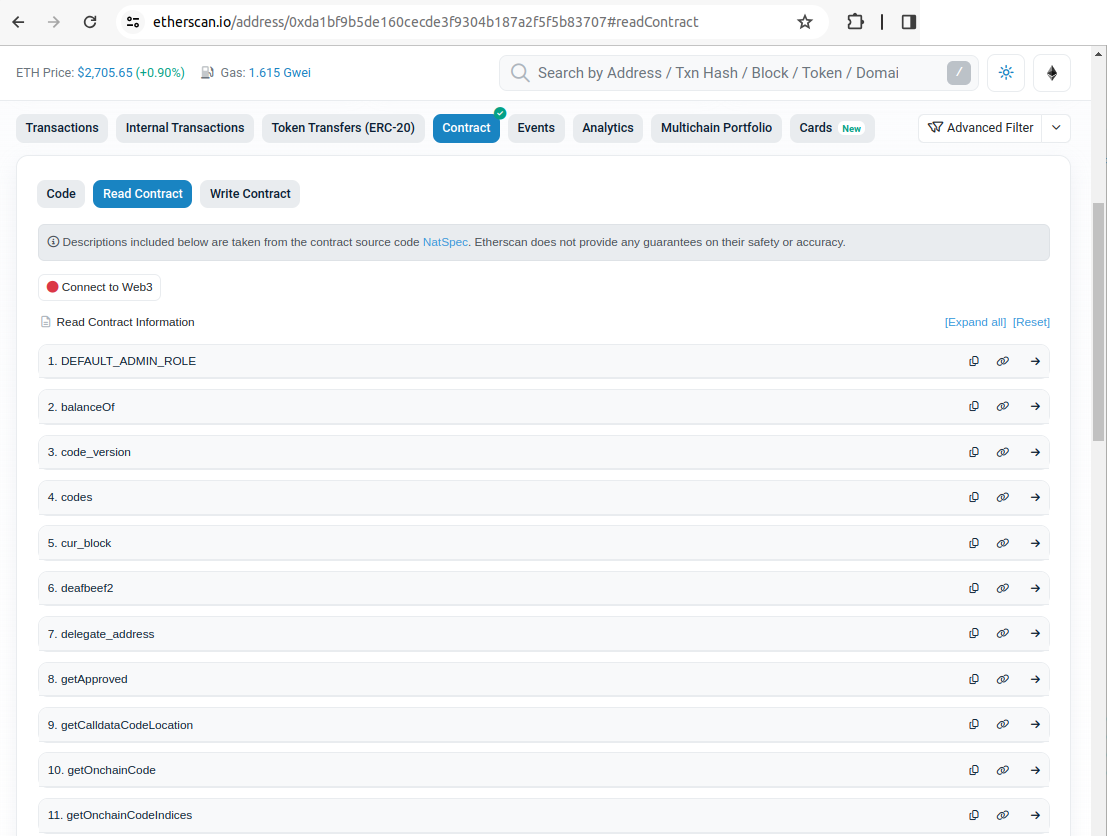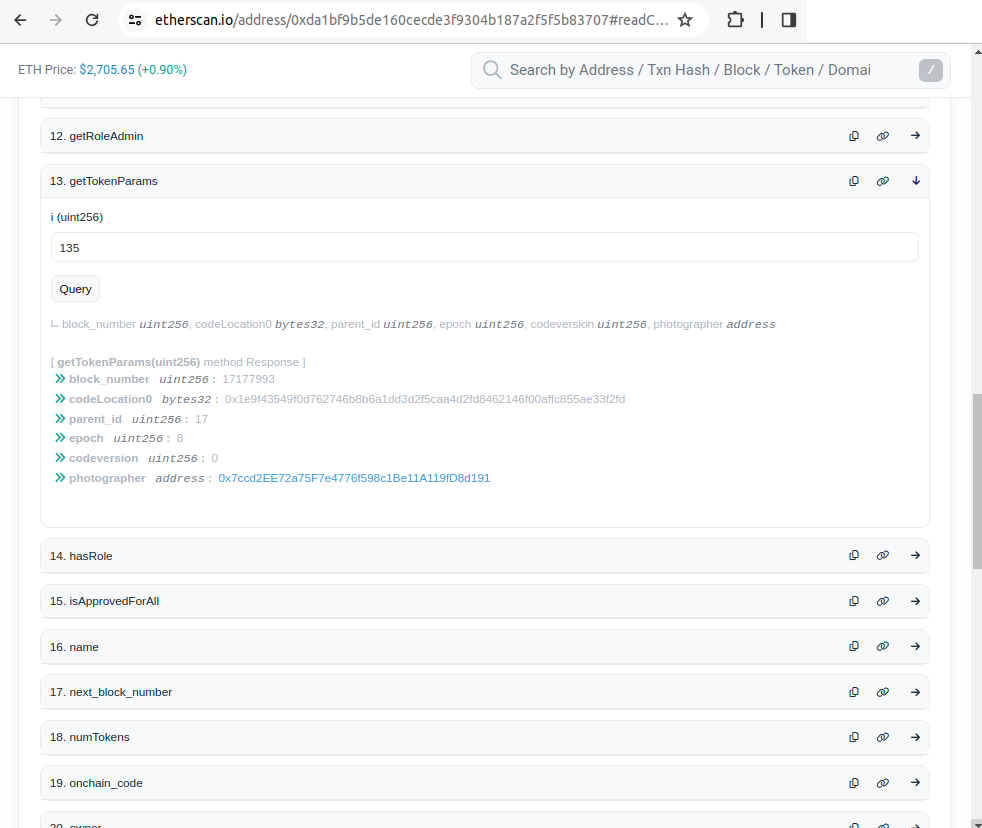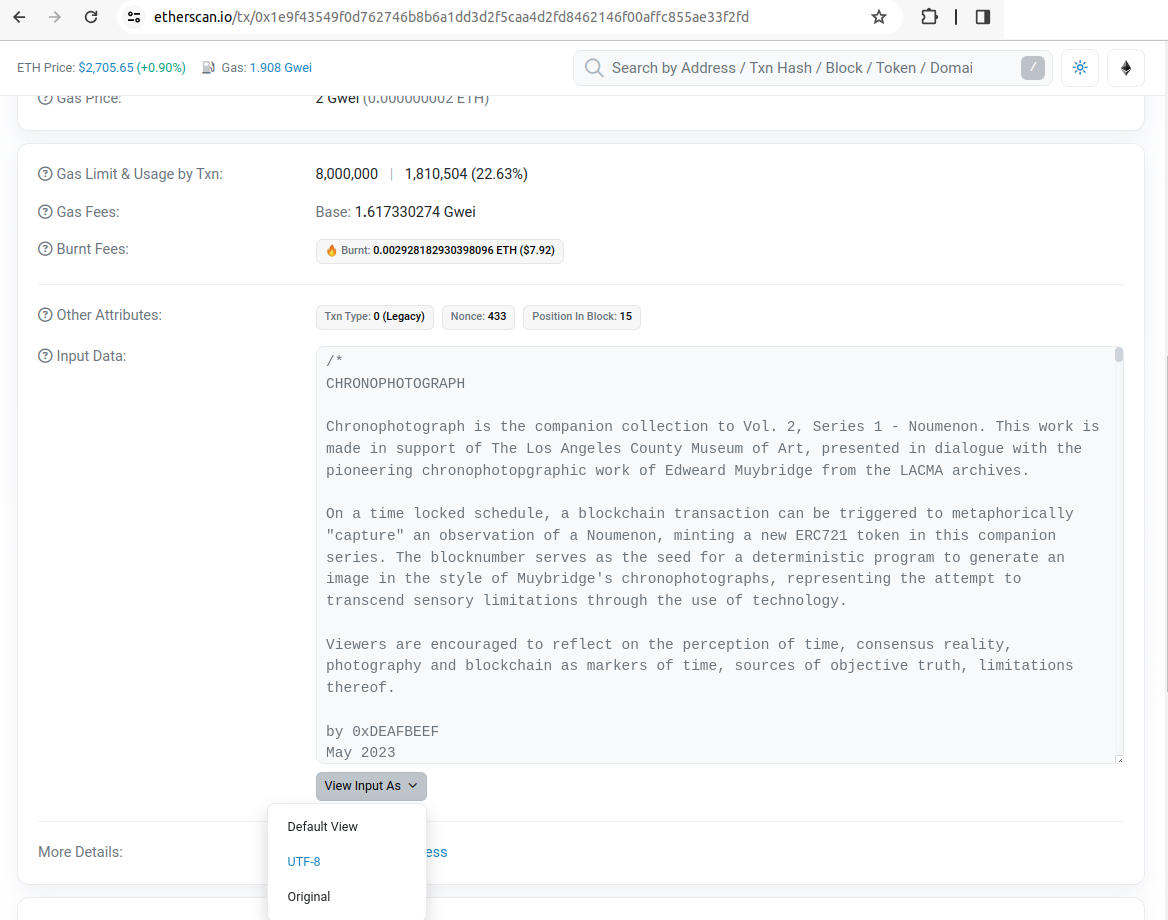0xDEAFBEEF
Guide for Reconstructing Media: Chronophotograph
Summary: obtain the C source code and token's parameters values from Ethereum blockchain. Replace the variables in the C file where indicated. Compile and run the program,obtaining the raw output (BMP and WAV files). Encode the raw output to MP4,MP3 using ffmpeg.Step 1: Obtain the C source code file and your token's parameters
Use a web3 client or etherscan.io to interact with the contract at https://etherscan.io/address/0xda1bf9b5de160cecde3f9304b187a2f5f5b83707.

Use the getTokenParams() function, passing your token ID.


Step 2: Replace the parameters variable with token's unique random hash
Near the top of the C source file, there is a function init_token_params():
void init_token_params() {
// insert token ID...
token_params.chronophotograph_token_id = 0;
// ...and the parameters returned from smart // contract function getTokenParams(tokenID)
//blocknumber the chronophotograph was minted
token_params.blocknumber = 0;
//ID of parent noumenon token. 'parent_id' var in getTokenParams return vals
token_params.noumenon_token_id = 0;
//epoch
token_params.epoch = 0;
}
Replace your token ID, and replace the indicated values with the 'p1','p2','p3' values previously read through getTokenParams(). For example:
void init_token_params() {
// insert token ID...
token_params.chronophotograph_token_id = 135;
// ...and the parameters returned from smart // contract function getTokenParams(tokenID)
//blocknumber the chronophotograph was minted
token_params.blocknumber = 17177993;
//ID of parent noumenon token. 'parent_id' var in getTokenParams return vals
token_params.noumenon_token_id = 17;
//epoch
token_params.epoch = 8;
}
Step 3: Install a C compiler for your platform.
Linux is the recommended platform, and GNU GCC is the recommended C compiler, available through default package managers. On Mac, you may be able to use Homebrew. On Windows, try GNU GCC binaries.Step 4: Compile and run the program.
Code conforms to the ISO c99 standard. Only library dependency is C math library. Pass '-lm' to gcc. Assumes architecture is little endian (all Intel processors)
Compile and run. Optionally pass '-Ofast' flag to enable optimization (faster rendering).$ gcc -Ofast main.c -lm && ./a.out
This will produce:
a. PGM(Portable gray map) 16bit grayscale, linear (no gamma) file named 'image.pgm'
PGM "Portable Gray Map" is an extremely simple file format for storing grayscale images. Specification here: https://netpbm.sourceforge.net/doc/pgm.html